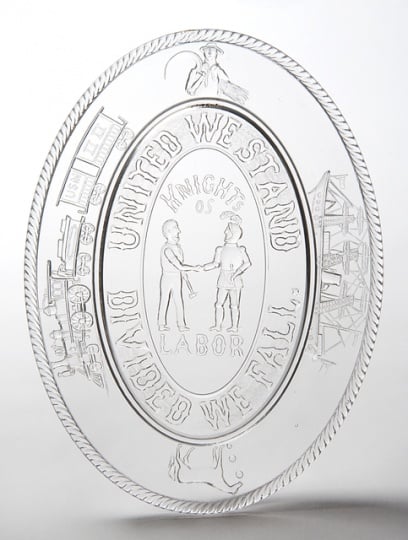The Knights of Labor shaped business and political policy in Minnesota communities in the late nineteenth century by working with the Farmers' Alliance and advocating for shorter work days, equal pay for women, child labor laws, and cooperation between workers.
Garment worker Uriah Stevens founded The Knights of Labor as a fraternal order in Philadelphia in 1869. It was a secret society until 1882, when Grand Master Workman Terence Powderly, who had replaced Stephens in 1879, opened the organization to the public. This gave it a much higher profile. Local chapters of the Knights of Labor, called assemblies, cropped up across the country. The first Minnesota assembly was formed in Minneapolis in 1878. St. Paul had two by 1882. Brainerd also had an assembly by 1882, and many others formed across the state in the 1880s in places like Duluth, Stillwater, Albert Lea, and Rochester. The Knights were unusually inclusive for the time, admitting both women and African Americans, and excluding from their membership only lawyers, bankers, liquor sellers, and professional politicians. All other workers, skilled or unskilled, were welcome.
The 1880s were the high point for the Knights of Labor, nationally and locally. The organization was officially against strikes as a way to resolve labor issues, but it nonetheless supported and was successful in two significant interstate railroad strikes, one against the Union Pacific Railroad in 1884 and one against Jay Gould's Wabash Railway in 1885. After these strikes, national membership in the Knights of Labor grew immensely, from approximately 100,000 members in 1885 to more than 700,000 members in 1887.
Minnesota Knights of Labor membership grew, as well, to about 10,000 in 1886. In 1885, the St. Paul Daily Globe began a weekly column on labor subjects called "From Shop and Mill." And in 1880s Minneapolis, cooperative worker-owned shops, called co-ops, were a prominent part of the labor landscape, beginning with coopers (barrel makers) and spreading to other industries. Co-ops of this type were strongly championed by the Knights.
The Knights of Labor reached the height of its political influence in 1886, when assemblies in twenty-six states, including Minnesota, put up candidates for election on Knights of Labor principles. Very few of these candidates were elected to public office in Minnesota and overall; however, members of the major political parties in Minnesota agreed to discuss issues raised by the Knights, such as a shorter work day, the abolition of child and convict labor, safer working conditions, and the creation of a state bureau of labor statistics.
In 1887, the national convention of the Knights of Labor was held in Minneapolis, with speeches by Minneapolis Mayor Alonzo A. Ames, prominent national labor leaders, and Grand Master Workman Powderly. The convention ran for fourteen days and was a great success.
Even at the 1887 convention, though, there were murmurs of the Knights' decline, as reported in contemporary newspapers. Member numbers were beginning to fall, as the organization could not meet the needs of its diverse membership. For example, urban skilled workers found their needs better served by craft associations, and groups such as the Minneapolis painters pulled out of the Knights in 1888. Remaining Minnesota assemblies, many of them rural, sought greater cooperation with local Farmers' Alliance groups, to consolidate their influence. At this time, the Knights also were in competition with a new group, the American Federation of Labor, which had a more powerful central organization, something the Knights had always lacked. And anti-labor forces, afraid of the Knights' power, were working hard against the group, refusing to negotiate with it. This made the Knights ineffective as mediators of employer/labor conflicts.
In 1895, in an effort to recapture the organization's original feeling of solidarity, national Knights of Labor leaders made the group a secret society again. The group's history is harder to track after this time, although local assemblies persisted in Minnesota into the twentieth century and national conventions continued to be held until 1932. The last local assembly in the United States, of motion picture operators in Boston, was not dissolved until 1949, when it merged with a local American Federation of Labor chapter.



